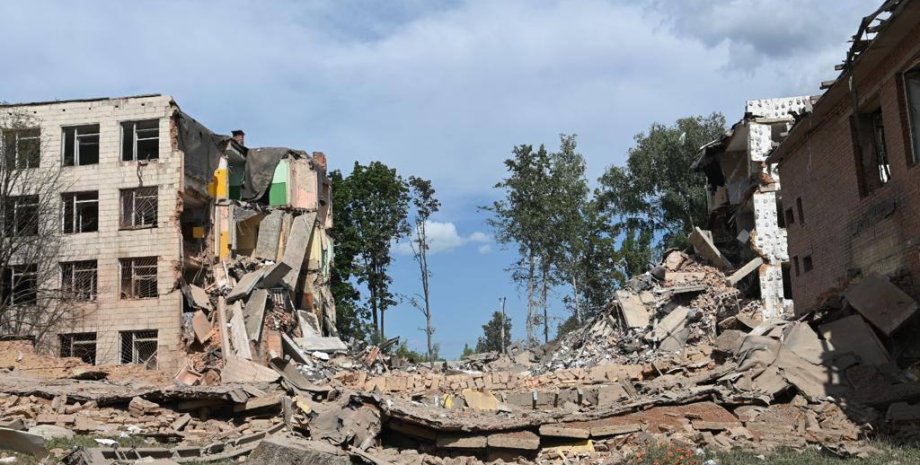
 By Victor Duda
By Victor Duda
But if you look deeper, in this specific region of the planet there are things much more interesting and important to humanity. Global changes in climate, both natural and geopolitical, make a new look at the poles of the planet Earth.
Between the Arctic (the so -called region, which is located in the middle of the North Polar Circle - a conditional geographical line, which runs approximately 66 parallels) and Antarctic (respectively, the region, which is located in the middle of the South Polar Circle, which also passes 66 parallels, but in the south of the planet) social aspects. Let's start with geographical differences - the basis of Antarctic is the mainland of Antarctica (an area of about 14.
2 million square kilometers), which is divided into western part (small Antarctica), which is a set of archipelagoes (groups of islands) and Eastern, which is a continuous continent. The basis of the Arctic is the North-Elected Ocean. Now let's move on to more significant - differences in political. To begin with, the territory of Antarctica has expanded to 60 parallels of southern latitude from 1959.
That is, another 6 degrees or about 700 kilometers towards the equator is added to the geographical filling. This is explained by the geopolitical feature of the Southern Hemisphere. It has historically happened that all the most powerful states of the planets are located north of the equator. Some of them have direct (Russia and the US) or indirect (United Kingdom) access to the Arctic.
It is indicative of China's efforts to refuse to the Arctic Council despite its geographical distance from the region. Instead, none of the great powers to Antarctic has a direct relationship - this has caused political dandelions that are quite indicative of how this world is arranged.
It is believed that Antarctica opened the German in the service in the Russian Fabian Fabian (Faddee) Bellinshausen, but the British and Americans put forward alternative versions, pointing that he really saw not the continent, but only one of the glaciers. Somehow, in the nineteenth century, when the continent was finally discovered, the most powerful in this world of Chile and Argentina in this world were closest to it.
From the Great Powers to the new continent, the UK with its colonies - Australia, South Africa, New Zealand - was the closest. However, by the end of the century, the technical capabilities did not allow the continent to be fully covered with ice: the thickness of the ice on average is 1800 meters, respectively, the maximum numbers reach thousands of meters. With the beginning of the XX century, the enthusiasts from science still passed the Antarctic continent along and across.
Not without fatal cases. Thus, in December 1911, the first South Pole reached an expedition led by Norwegian Rulle Amundsen. Instead, the expedition of his rivals led by British Robert Scott died on the way home (they reached the South Pole in January 1912). Along with the unconditional romantic enthusiasts of Antarctica, more pragmatic hunters were attended by rare species of local fauna. Seal hunters, wings and the most maternity whaling.
All of them, in their aggressive hunt, put their craft on the face of death. At this time, the disputes between Argentina and Chile for territories, now called the Antarctic Peninsula, flared up. In 1908, the United Kingdom, which conducted active research in the region, declared its claims to these territories.
Even after the First World War, New Zealand, and then France Australia and even Norway (not for nothing its expedition went to the South Pole) declared their claims for a certain share of Antarctic. At the same time, their claims were often related to the same lands - whether it is ice deserts. And after the Second World War, it became clear that the international order had changed. The USSR and the US did not declare claims for the sixth continent in the interwar period.
Therefore, the two most powerful states in the world are late for the treasures of the frozen continent. In such circumstances, the event is canceled. Therefore, no significant actions on Antarctic occurred. It was at these times that rumors began to spread that this deserted continent became a refuge for the Nazis who avoided justice.
The countries that made claims to the Antarctic territories were engaged in "children's wasteland", stealing flags and other signs of belonging of the territories of each other. Only once in 1952 came to the shooting between the British and the Argentines. In the end of the decade, the United States entered the Antarctic neutrality initiative. From July 1957 to July 1958, the largest international studies of the planet - the International Geophysical Year - continued.
After that, in the fall of 1959, a conference was held in Washington on the development of the region, which decided that Antarctica would not reach anyone. Each country of the world has been entitled to freely explore Antarctic (it was at this conference that 60 parallel was allocated), but none has the right to apply for sovereignty over any territory, at least as long as the contract. In the following decades, dozens of countries opened their research stations on the continent.
Traditionally, the struggle for Antarctica during the Cold War has become another element of confrontation between the US and the USSR. The Soviet Union built all the bases in the region, but the United States founded the largest base of the base (McMerdo). A civilian population (ie not researchers) lives on the Argentine base of Esperan. In 1978, a baby was even born there. At the same time, a local school was founded. Since 1985, China has been present on the continent.
And with the arrival of the 21st century, the Middle Kingdom doubled the number of its permanent research stations (up to four). Beijing with his ambitions simply cannot pass this topic. Moreover, it is much closer to Antarctica than many other geopolitical competitors. Unlike the Arctic, Antarctic does not have such a rational value in the visible perspective.
It will not be a significant transport corridor in the near future, and it is difficult to calculate the reserves of natural resources through a thick layer of glaciers. Minerals of Antarctica are: coal, iron ore, mica, copper, lead, zinc, graphite and more. According to the Antarctica Agreement, the extraction of minerals is prohibited by 2048. But the value of Antarctica is different. It is symbolic. It is a continent in the Southern Hemisphere. Its name is translated as "opposite the Arctic".
And they divide it mainly northern countries with the descendants of their colonists. Everything here contributes to the beginning of a new confrontation between the Global South and the North or the West. Therefore, the PRC constantly increases its bases here both permanent and temporary - in 2024 the fifth research station was put into operation. The media of the Celestial is presented as the next super -project of the Communist Party.
Interestingly, the Chinese stations are located around the perimeter of the territories, which had previously claimed New Zealand. Yes, you can eat the same wing around the mainland (industry in the region reaches 20% of the world catch). But Antarctica is not about benefits here and now. This is the true sense of the word space project. After all, its placement in the coordinates of the Earth helps to study space in those aspects in which it cannot be done from a single point on the planet.
The Antarctic Department of the Conrad Adenauer Inga Fon Der Stein, a researcher of the Antarctic Branch of the Conrad Fon, believes that in the prospect of Antarctic stations can be used for improved navigation of artificial land satellites - which may already give a certain military advantage in the future.
In addition to Antarctica astronomy, it is a real museum of geological, zoological and botanical history, because in its glaciers, samples of flora and fauna were forever frozen in the state in which they were millions of years ago. Most of its existence was not frozen. Once upon a time, flowers grew, and between them large and small animals were relaxed in the warm rays of the sun. Obviously, it will ever freeze and give humanity a giant base of resources.
Yes, the Antarctic continent accumulated up to 80% of fresh water that remained on the planet. The Antarctica treaty is not conscious. It needs a release in 2048. And who will re -lay it again? And do all the interested parties support the inviolability of Antarctica? And also - on whose side will Argentina and Chile - closest to the continent of the country? The answer is to wait a little over two decades. Ukraine also joined the study of the continent.
Since 1994, a permanent Antarctic research station named after Vladimir Vernadsky (until 1996 - Faraday station) has been operating on the Galindes Island (7 kilometers from the Antarctic Peninsula). It should be noted that its United Kingdom has transferred to Ukraine. All Soviet stations were seized by Russia. The main areas of study are the same as in other stations - from marine depths to outer spaces. Ukraine has paid special attention to this promising trend in recent years.










All rights reserved IN-Ukraine.info - 2022